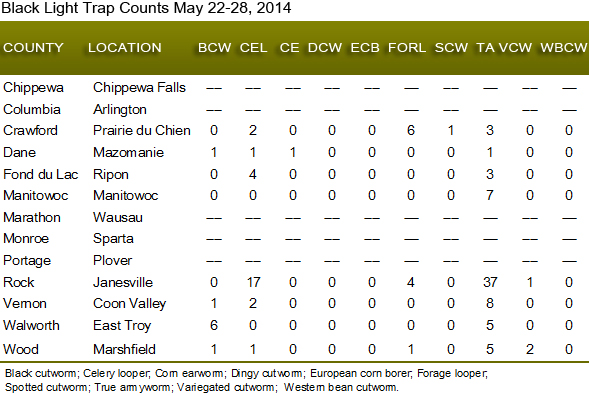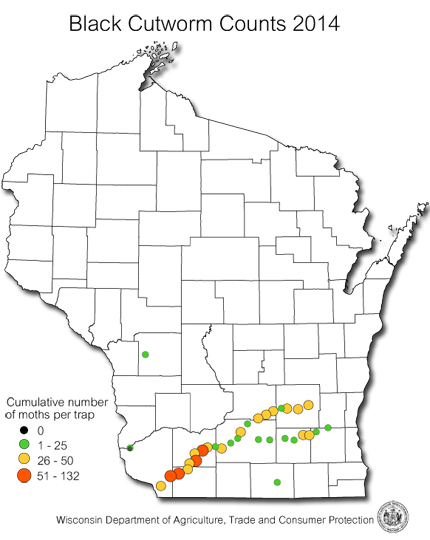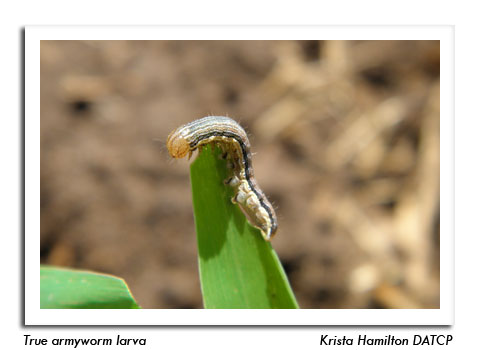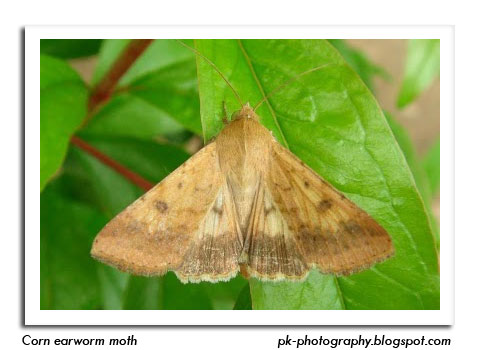
 |
|
|
Corn
Volume 59 Number 5 Date 05/29/2014 BLACK CUTWORM - Larvae resulting from the spring migration are now in the destructive late-instar cutting stages and could be encountered in emerging corn. Signs of cutworm activity, such as small, irregular holes in the leaves and cut plants, should become evident in the week ahead. Much of the state's corn acreage is at increased risk of infestation this season as a result of delayed planting, late weed control and the large April-May moth migration. All cornfields should be closely monitored for cutworm feeding until the five-leaf (V-5) stage. Early detection of cutworm problems is critical for insecticide treatments to be effective and economical. The threshold for corn is when 3% of plants are damaged. Summarized in the map below are moth counts for the seven-week period from April 13-May 28. The spring trapping survey resulted in the capture of 1,068 black cutworms in 34 traps, with a high count of 132 moths near Platteville in Grant County. TRUE ARMYWORM - No significant moth flights have been documented this month, but moths are common in grassy vegetation and egg deposition is expected to be heavy at this time. Crop consultants and growers should anticipate larval armyworms appearing in cornfields by mid-June. CORN EARWORM - A few early migrants arrived on southerly winds in the last two weeks. One moth was captured in the Janesville pheromone trap on May 20 and two others were collected from May 22-27. These very early moths pose no threat since the vast majority of the state's corn acreage (79% as of May 25) has not yet emerged. -- Krista Hamilton, DATCP Entomologist 




|
|
|